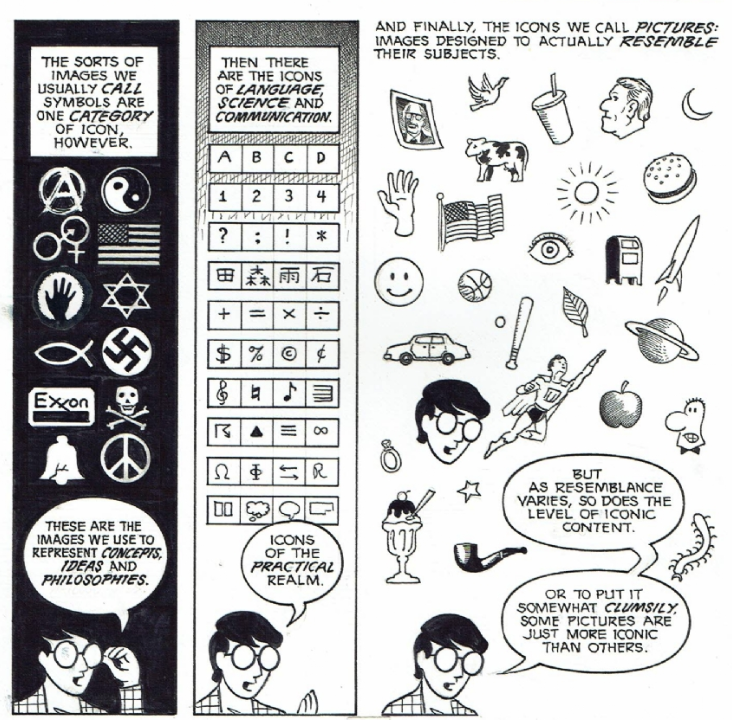Comics: a series or pictures that follow a narrative sequence
Cartooning: The focusing on key details of a figure, object or setting.

Panel: The frame in which comics are drawn.

Closure: The observation of parts while perceiving the whole of an image or series of images.
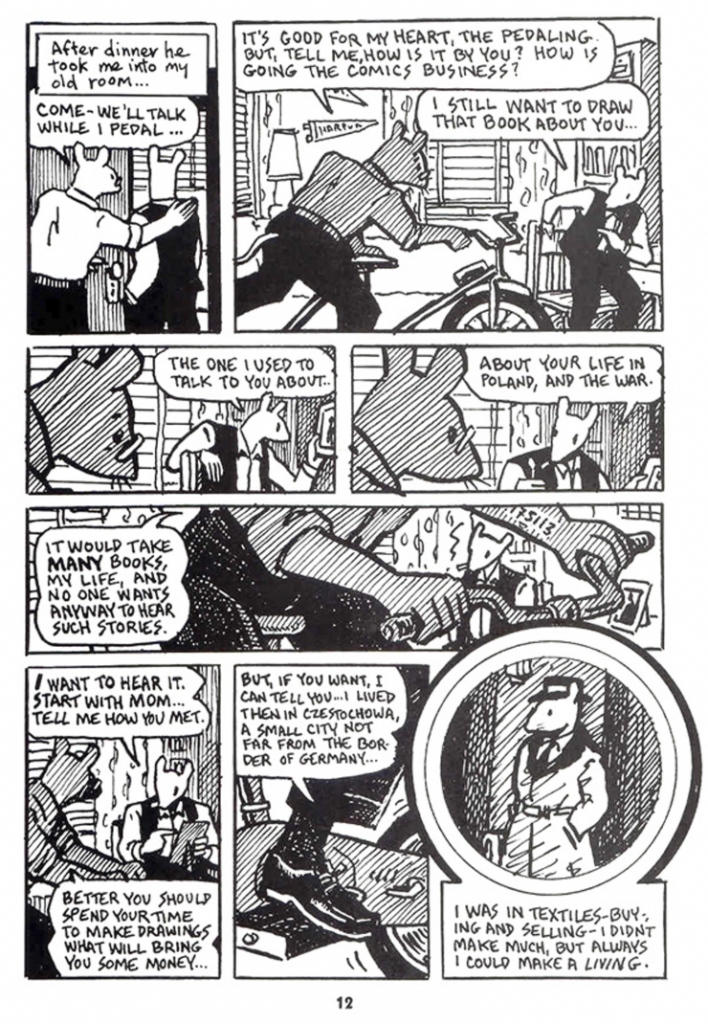
Gutter: The spaces between the panels of a comic.
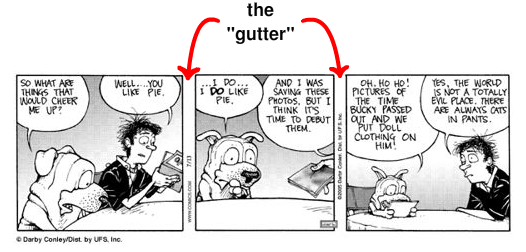
Action to action: A type of transition in comics that features a single subject in the progression of a single action.
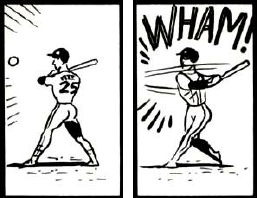
Aspect to Aspect: A type of transition in comics that features a bypassing of time and a wandering eye on different aspects of a place, idea or mood.

Negative space: Space around and between subjects of an image. When considered, it can strengthen the effectiveness of an image.
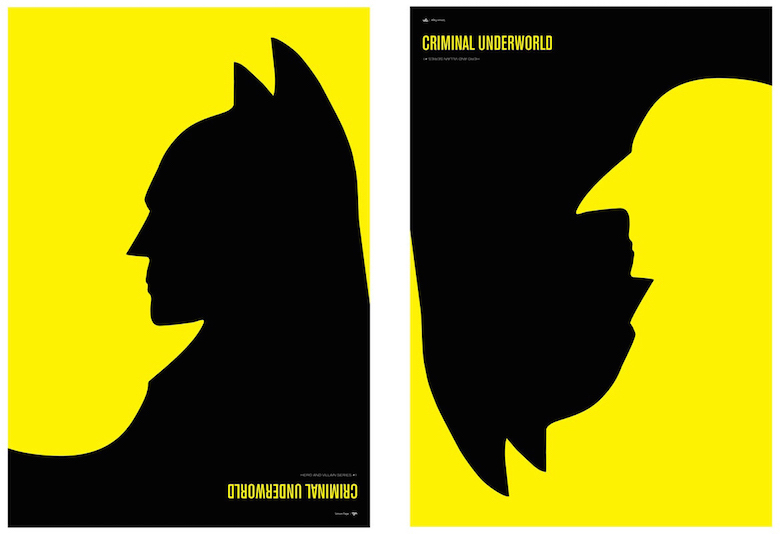
Spread: A spread is an image or series of panels that span over more than one page. Comics typically use two-page or double-page spreads.

Icon: Any image used to represent a person, place, thing or Idea.
